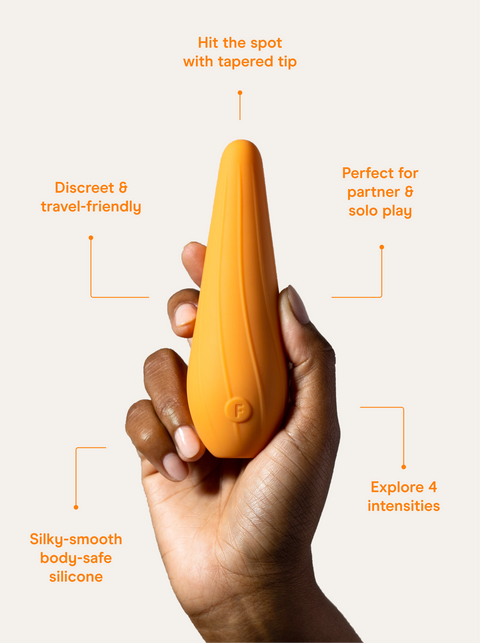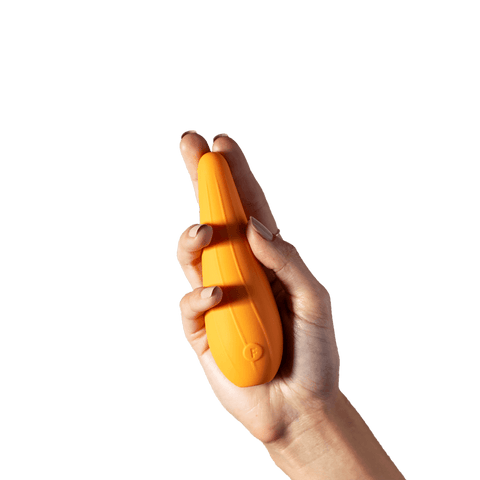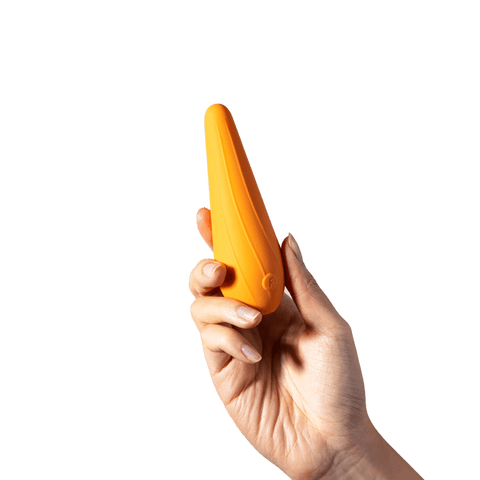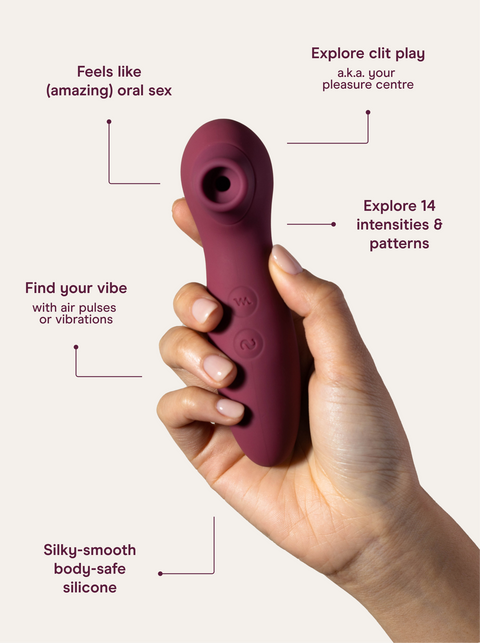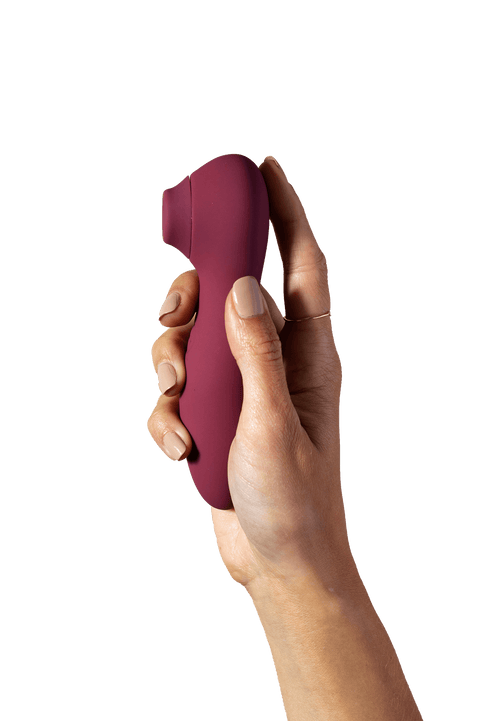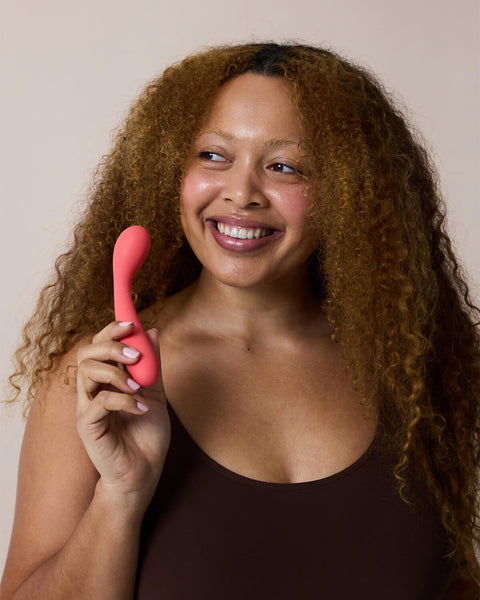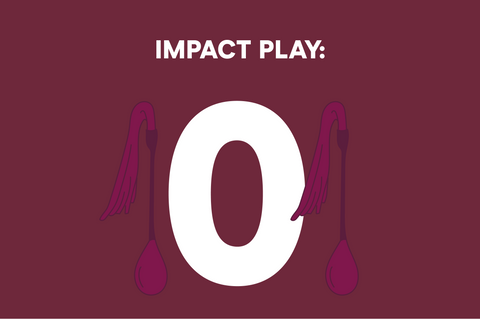Even though so many of us are aware of how important consent is to sex, there’s a misconception that it can feel awkward or clunky to talk about. And this makes sense, because few of us were raised to talk about sex in frank and open terms! Even when we have the very best of intentions, it can still feel tricky to talk about consent.
Here at NORMAL, we talk a lot about the importance of consent. And in the interest of giving you even more tools to use, we’re going to look towards the kink and BDSM communities to see how they discuss consent—and what we can learn from them.
***
Consent is a huge part of kink and BDSM.
There are many kinky or BDSM-related activities that could be really harmful or upsetting for a person to experience if they hadn’t previously consented to it: think spanking or being restrained. Springing these things on a parter without their consent would be considered assault, but if all parties have discussed their boundaries beforehand and consented to what they’re about to do, these activities can be done in a safe, and of course hot way.
There are a few different lessons that the BDSM and kink communities can teach us about consent. Here are some of the ones that we like, although this list certainly isn’t exhaustive!
Affirmative (or enthusiastic) consent
In recent years, consent education has focused on affirmative consent (also sometimes referred to as enthusiastic consent), because it is more nuanced than a yes or no question (although sometimes it is as simple as no). Affirmative consent refers to a person giving consent in an enthusiastic, positive way: think, “Ooh yes, I’d love to use that crop!” rather than, “Yeah, we can use the crop”. People exploring BDSM can seek their partner’s affirmative consent to ensure that they’re really, truly keen on doing something—not just doing it because they feel pressured to, or reluctant to say no.
Safe words
Safe words are something that you might have heard of before. It refers to the use of a specific word or phrase during sex to signal that you’d like to stop, slow down, or take a break. Safe words are hugely popular in the kink and BDSM communities because for some people, saying ‘no’ during play with their partner might be a part of the fantasy they’re living out. Using a safe word to signal their discomfort instead of ‘no’ or ‘stop’ allows them to immediately step out of the bounds of the fantasy and tell their partner how they’re feeling. If you’d like to use a safe word with your partner, agree on it beforehand and make sure it’s a word you’d never use during sex: think ‘pineapple’ or ‘surfboard’ or anything else that’s totally disconnected from your regular bedroom conversation.
The traffic light system
The traffic light system is often used within kink and BDSM to signal a person’s level of comfort with the scene, or activity, they’re engaged with. ‘Green’ often means, ‘this is great, let’s go further!’, ‘yellow’ often means, ‘this is good but let’s not go further’ or ‘let’s pause and check in’, and ‘red’ often means, ‘let’s stop now’. Using this system means that people have an easy, go-to word to signal how they’re feeling: rather than saying, “Well, the spanking is fun but I need to adjust these restraints and I’d like to give the vibrator a rest…” participants can say, “Red!” or “Yellow!” to communicate their feelings quickly and easily. Although the idea of the traffic light system is widely understood, some people do have different understandings of what each colour means—so before using it with a partner, we recommend talking first about exactly what each colour will signify to you.
Body language and physical signals
Body language is a big part of consent! Although you should never assume whether someone is consenting based solely on their body language, it can clue you in to how they’re feeling: someone who’s leaning in and smiling might be showing interest, and someone who’s turning away and frowning might be uncomfortable. Body language and physical signals are used in the kink and BDSM communities too. Sometimes, partners will agree on a physical signal to use if one person is uncomfortable and can’t communicate it with words (if they’re gagged, are facing down into a pillow, or if they just can’t communicate with words at the time). These physical signals can look like taps, claps, pokes, or squeezes—anything that can quickly communicate to a partner, “Hey, I’m uncomfortable, let’s stop!”. As with the other methods we’ve discussed here, if you want to use this with a partner we recommend discussing it with them beforehand so they’re aware of what the signal means.
***
These are just a few of the ways that the BDSM and kink communities talk about consent. We’d love to know if you’ve borrowed any of these tools, and how they work for you!
Curious about exploring for yourself? Our Kink Kit is the perfect place to start, with elevated essentials and pleasure education from experts included.





